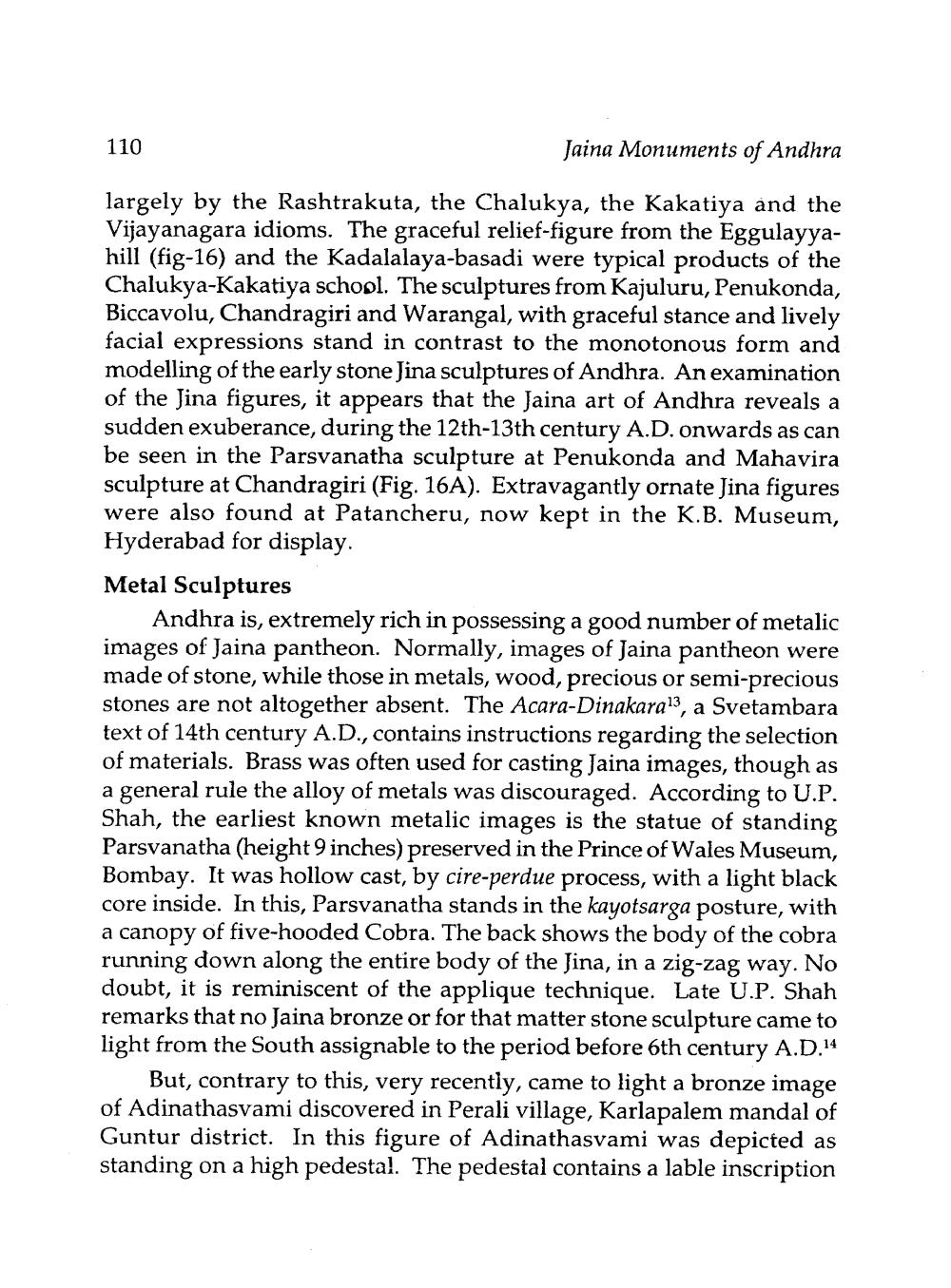________________
110
Jaina Monuments of Andhra
largely by the Rashtrakuta, the Chalukya, the Kakatiya and the Vijayanagara idioms. The graceful relief-figure from the Eggulayyahill (fig-16) and the Kadalalaya-basadi were typical products of the Chalukya-Kakatiya school. The sculptures from Kajuluru, Penukonda, Biccavolu, Chandragiri and Warangal, with graceful stance and lively facial expressions stand in contrast to the monotonous form and modelling of the early stone Jina sculptures of Andhra. An examination of the Jina figures, it appears that the Jaina art of Andhra reveals a sudden exuberance, during the 12th-13th century A.D. onwards as can be seen in the Parsvanatha sculpture at Penukonda and Mahavira sculpture at Chandragiri (Fig. 16A). Extravagantly ornate Jina figures were also found at Patancheru, now kept in the K.B. Museum, Hyderabad for display. Metal Sculptures
Andhra is, extremely rich in possessing a good number of metalic images of Jaina pantheon. Normally, images of Jaina pantheon were made of stone, while those in metals, wood, precious or semi-precious stones are not altogether absent. The Acara-Dinakara13, a Svetambara text of 14th century A.D., contains instructions regarding the selection of materials. Brass was often used for casting Jaina images, though as a general rule the alloy of metals was discouraged. According to U.P. Shah, the earliest known metalic images is the statue of standing Parsvanatha (height 9 inches) preserved in the Prince of Wales Museum, Bombay. It was hollow cast, by cire-perdue process, with a light black core inside. In this, Parsvanatha stands in the kayotsarga posture, with a canopy of five-hooded Cobra. The back shows the body of the cobra running down along the entire body of the Jina, in a zig-zag way. No doubt, it is reminiscent of the applique technique. Late U.P. Shah remarks that no Jaina bronze or for that matter stone sculpture came to light from the South assignable to the period before 6th century A.D.14
But, contrary to this, very recently, came to light a bronze image of Adinathasvami discovered in Perali village, Karlapalem mandal of Guntur district. In this figure of Adinathasvami was depicted as standing on a high pedestal. The pedestal contains a lable inscription




